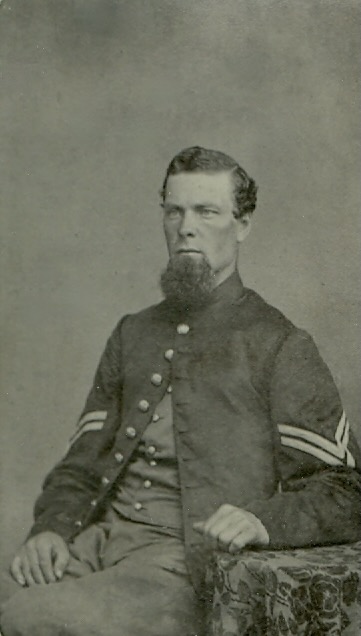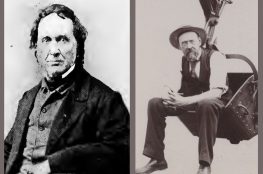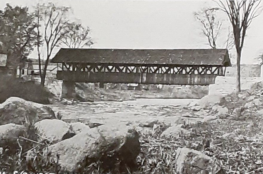The Broughton family arrived in Conway sometime around 1794 when Mark Broughton is included in an inventory. The family received one of the first land grants in Conway and established a dairy farm on the south side of the river on East Side Road. The farm, known as the Hill, remained in the Broughton family for five generations.
Mark’s son John (1803-1880) succeeded in the ownership of the farm. John married Sarah “Sally” G. Merrill (1805-1883), and the couple had four children, Philomela (1825-1902), Julia (1830-1881), Octavius (1831-1909), and Charles Austin (1835-1909).
Charles Austin Broughton was born on July 31, 1835, in Conway. At age 26 in 1861, Charles helped his father build a new thirteen-room farmhouse on the Hill. On New Year’s Day, 1862, Charles married Hannah A. Quint (1840-1914) and brought her to live at the family homestead.
In 1863, Charles and Hannah had a daughter, Carrie, who died the following year. On September 22, 1864, Broughton enlisted in the 18th New Hampshire Volunteers, Company E, for eight months as part of a lead troop that would construct bridges for other troops to transport supplies to the south. He mustered out on June 10, 1865, and returned home to the dairy farm and his six-month-old son, Frank Charles, who was born on January 29, 1865.
Charles worked as a contractor, builder, and carpenter. He constructed many buildings in Conway in addition to building covered bridges. Charles served as an agent for the Swift River Lumber Company for ten years and was employed by Allen’s Siding for six years. Charles and Hannah had four more children, Clara (1866-1940), Julia (1869-1871), Edith (1872-1949), and Winn (1873-1951).
Charles was known as a talented fiddler and finish carpenter. In June 1888, Charles killed a “monstrous” bear near his home. He “exemplifies in his own person the hardy characteristics of the race from which he springs, being a keen sportsman and having a well-earned reputation as a skillful bear hunter” (New England Historical Publishing Company 1902). Charles ran unsuccessfully for county commissioner and was a Master Mason and member of the Mount Washington Masonic Lodge. In 1891, Charles was granted a patent for a machine for forming spool blanks.
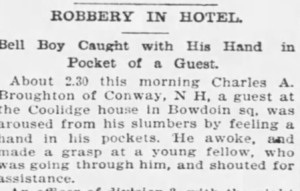
In October 1895, Charles was resting at the Coolidge House in Boston after a night at the theater. He had laid down on the hotel bed, still dressed in his clothes. Around 2:30 am, he was awakened by someone putting their hands in his pockets. “He instantly grappled with his caller and soon placed him hors de combat, dragged him into the hallway and called for help… the thief who had already secured Mr. Broughton’s watch, was taken into custody” (White Mountain Reporter 1895). It seems the nineteen-year-old bellman was no match for Broughton.
Charles and his son, Frank, built the Jackson Bridge in 1876 and rebuilt the Saco River Bridge in 1890 after it was destroyed by a fire. The Broughtons are often credited with building the Whittier Bridge in Ossipee alongside Jacob Berry, but that claim has never been substantiated.
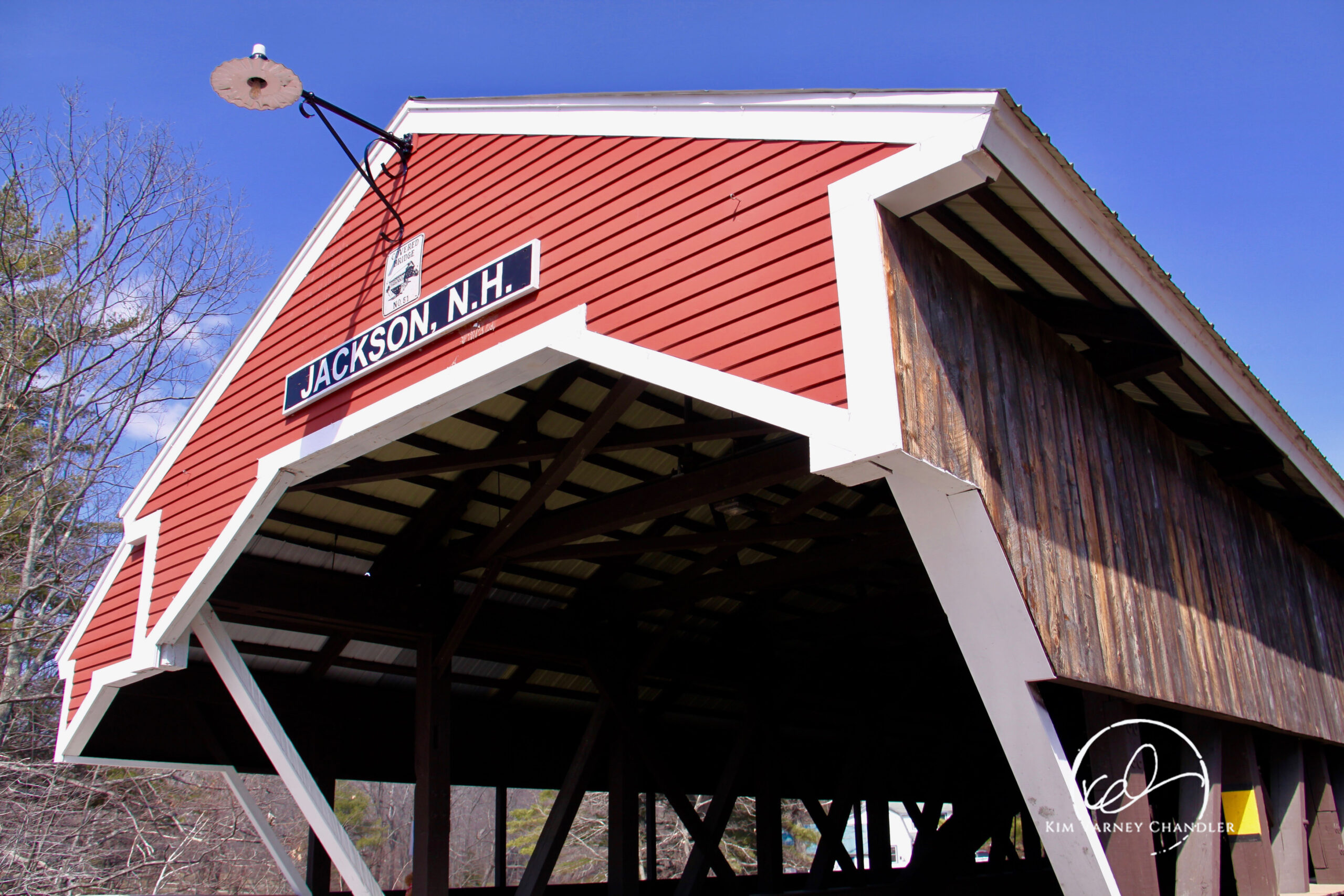
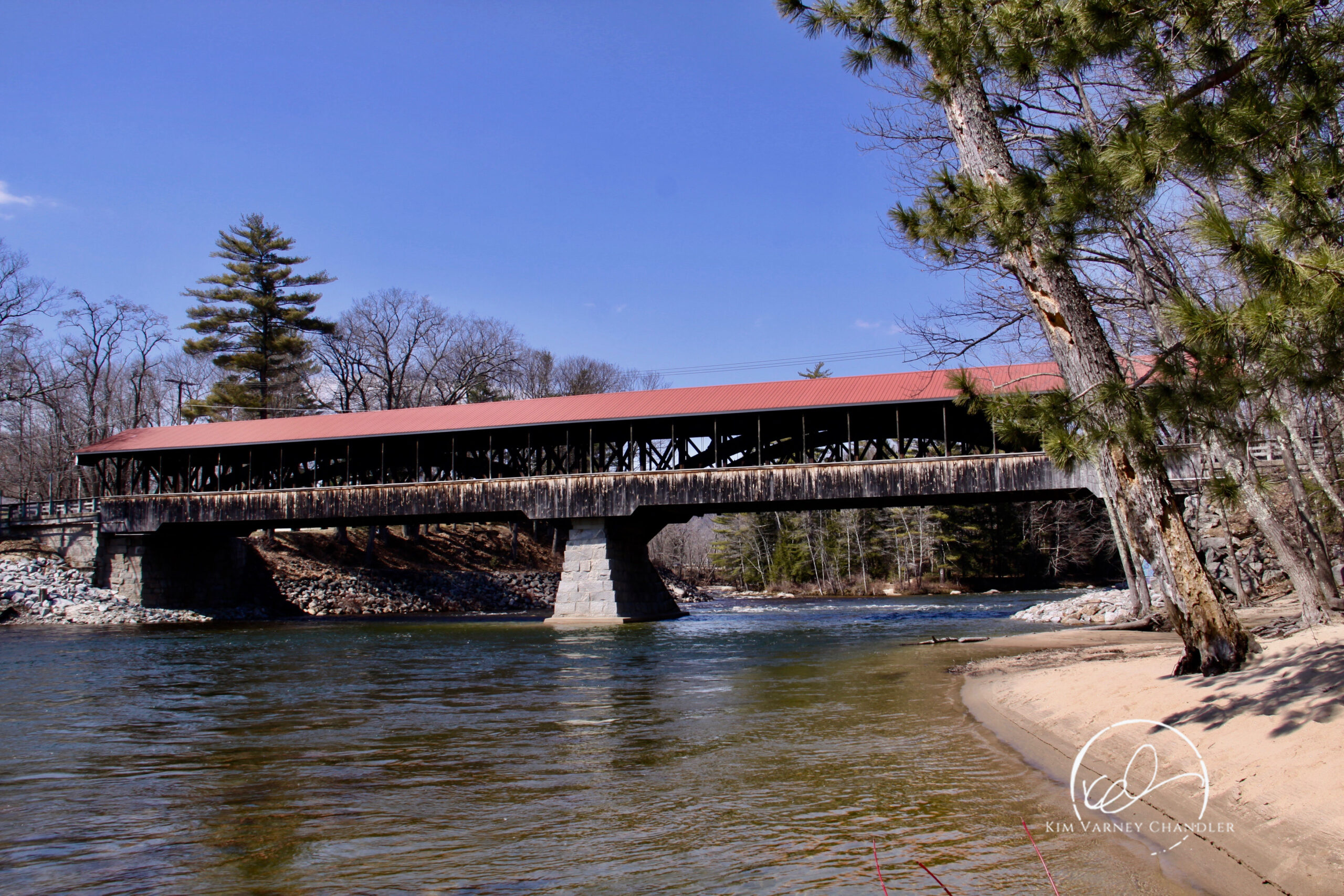
Because he could not be away from his dairy farm for too long, Charles would assemble the bridges on his property. He would draw elaborate plans of the bridge, mark each piece with carved numbers, disassemble the pieces, then transport and reassemble the pieces at the bridge location. Broughton used ship’s knees (naturally curved pieces of wood) for bracing and made his own nails by hand. He exclusively utilized the truss design of Peter Paddleford (Menici 2021).
In 1909, Charles died of a cerebral hemorrhage at age seventy-three. He is buried in the Conway Village Cemetery alongside his wife.
Charles’ son, Frank C. Broughton (1865-1943), married Flora Churchill (1864-1933) and had two children, John (1896-1983) and Virginia (1890-1982).
Frank managed the dairy farm throughout his lifetime and worked alongside his father to construct covered bridges in the Conway area. In his later years, Broughton supervised many repair operations on the bridges despite his advanced age.
Frank repaired the Redstone Bridge in Conway in 1934. He reported to C. Ernest Walker that “he and his crew went into the hackmatack swamps with axes and saws; dug and blasted the stumps, and made naturally bent knees, similar to the ship knees used in framing the old windjammers. These were used for corner braces to bring and hold the superstructure of the bridge in line” (Walker 1954).
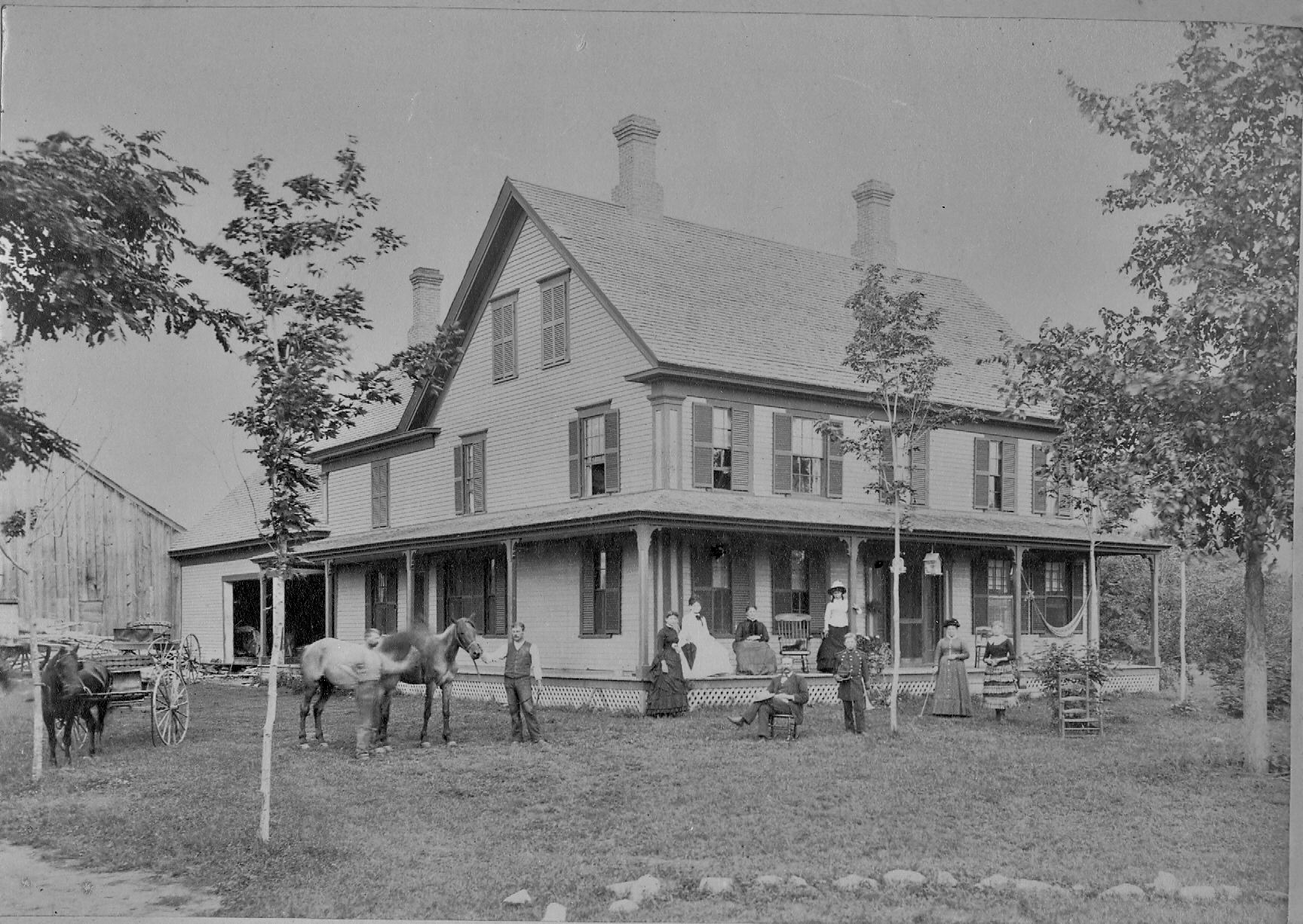
On May 22, 1939, the Broughton homestead was destroyed by a fire. “Monday morning as two men in a beach wagon were driving by the Broughton farm on the East Side Road they saw flames coming through the roof of the ell to the house. They drove in and upon entering found Mr. Broughton alone reading and quite unconscious of the fact that his house was on fire” (Conway Reporter 1939). After calling the fire department, the men let twelve cows and one calf out of the barn. The fire destroyed the house, shed, barn, and three silos; the garage, blacksmith shop, hen house, and two sheds were unharmed. Frank rebuilt the homestead but not the dairy farm.
Frank died of pneumonia in 1943 at the age of seventy-nine. It was reported this was the first sickness of his lifetime. His obituary states, “for several years has been known as the last of the covered bridge builders and has directed repairs on bridges when unable to work himself on account of lameness” (Conway Reporter 1943).
References
Historical photos courtesy of the Conway Public Library. Thank you to Bob Cottrell, Henney History Room Curator, Conway Public Library.
Conway Reporter. 1939. “Flames Destroy Broughton Farm in Conway.” Conway Reporter, May 25, 1939.
—— . 1943. “Frank Broughton.” Conway Reporter, December 2, 1943.
Merrill, Georgia Drew. 1889. History of Carroll County, New Hampshire. Boston, MA: W.A. Fergusson & Co.
New England Historical Publishing Company. 1902. Biographical Sketches of Representative Citizens of the State of New Hampshire. Madison, WI: University of Wisconsin – Madison.
Walker, C. Ernest. 1954. “Conway N.H. Covered Bridges.” Covered Bridge Topics. Summer 1954.
White Mountain Reporter. 1895. Conway. White Mountain Reporter. October 5, 1895.

